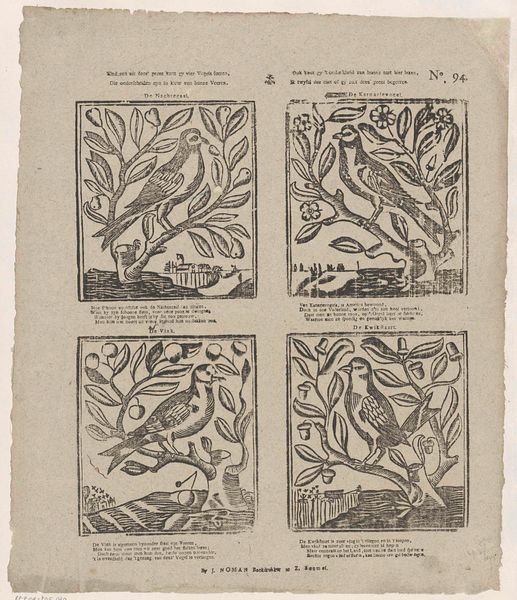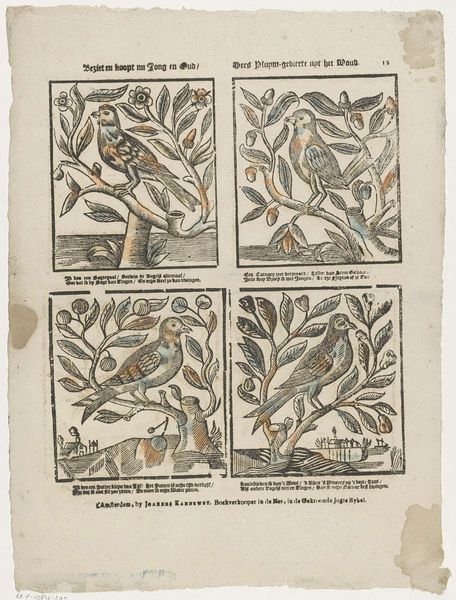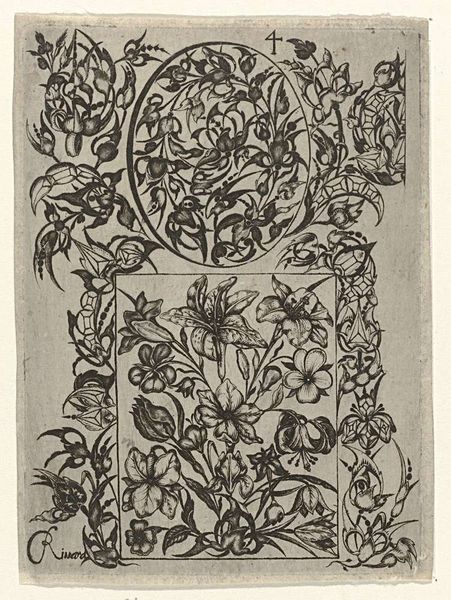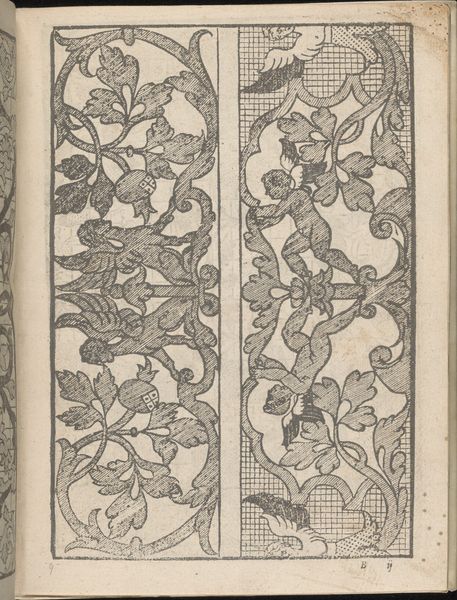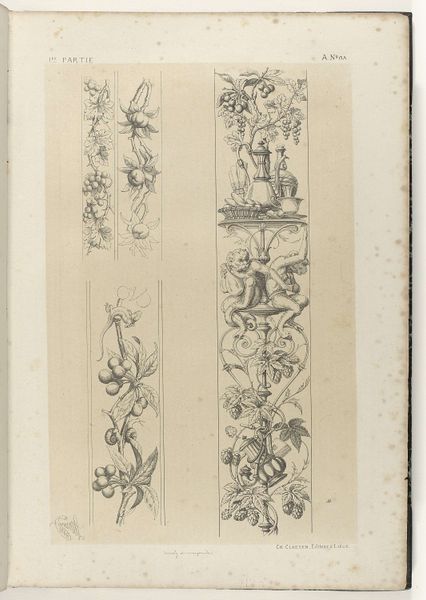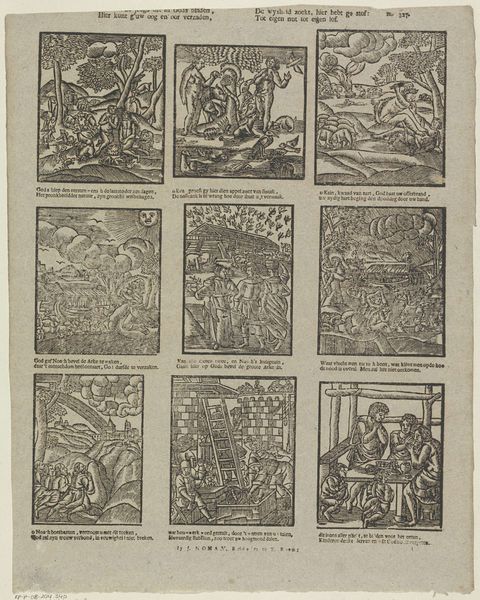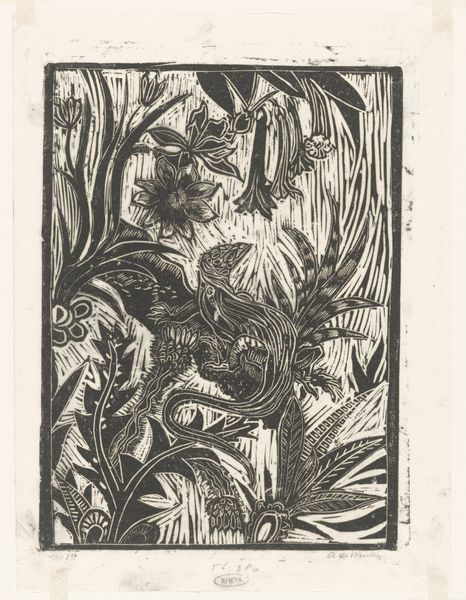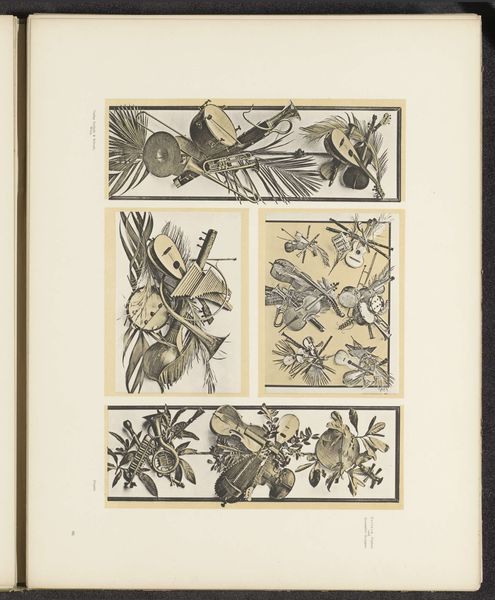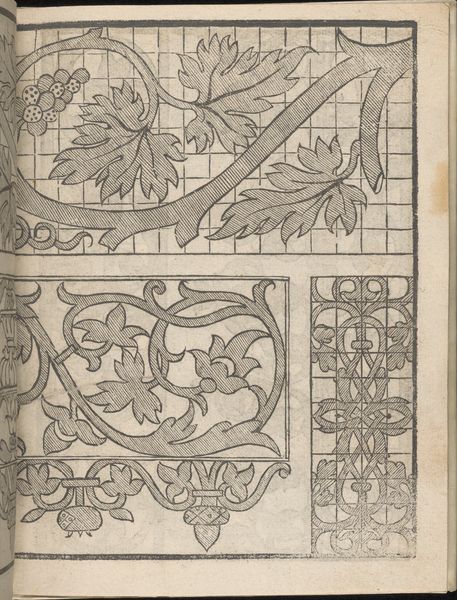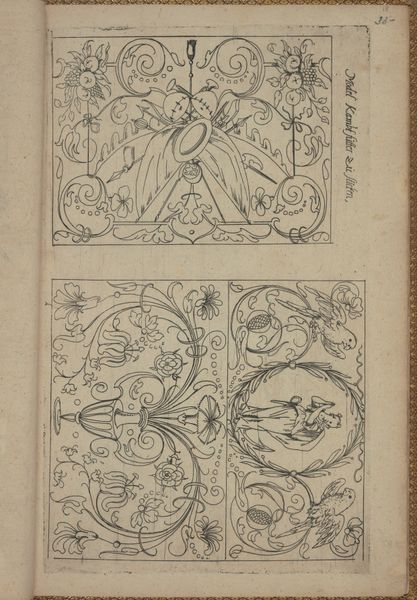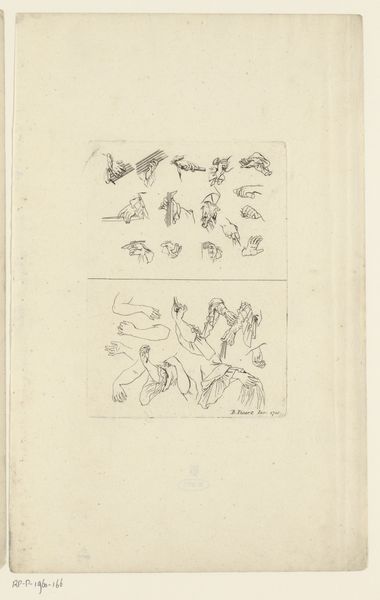
Dimensions: height 425 mm, width 310 mm
Copyright: Rijks Museum: Open Domain
Curator: Let's take a look at this engraving from around 1765-1767 titled "Vogels," meaning "Birds" in Dutch, created by weduwe Hendrik van der Putte. It’s a woodcut printed on paper. Editor: It strikes me as both whimsical and quite deliberate. The compositions within each square, despite being of similar subjects—birds on branches—feel unique, each bird presented with individual character. Curator: Precisely. Birds in art have long been carriers of symbolic weight. In many cultures, they represent freedom, the soul, or serve as messengers between worlds. Considering the period, what readings do you see here? Editor: I find myself contemplating the social context of 18th-century Holland. The Dutch Golden Age, while past its peak, still possessed a strong merchant class with global connections. Birds, particularly exotic species, could represent wealth, trade routes, and perhaps a longing for the unknown. This intersects with ideas around collecting and categorizing the natural world. Curator: The "folk-art" quality, that raw yet charming engraving style, offers its own symbolic language. Woodcuts and engravings made the images accessible, less precious, intended for broader audiences beyond the aristocracy. There's a democratization of art occurring. Editor: Yes! This accessibility allows us to also think about folk-art more broadly—reflecting the traditions, values, and aesthetics of ordinary people and everyday life. These images potentially speak to issues of social identity and belonging, too. Curator: Observe how each bird is depicted with subtle, anthropomorphic details. These birds invite projection and embody stories and feelings through their forms. There's continuity with classical allegories but inflected with distinctly vernacular sentiment. Editor: And by considering gender dynamics we can begin to ask important questions. Was weduwe Hendrik van der Putte constrained by societal expectations? What limitations was she navigating as a female printmaker during this era? Curator: Looking closely, there is text accompanying each bird. They must reveal something particular about what the bird "means." Editor: We could dive into translation, exploring themes like captivity versus flight, domesticity compared to wilderness, expanding how these small squares resonate beyond the purely decorative into potent micro-narratives reflecting their time. Curator: Reflecting, perhaps this intersection provides the deepest resonance; considering both the enduring visual symbols of freedom found in birds and also asking the historical questions to provide a contextual reading. Editor: I agree. Ultimately, this piece, though modest in scale, acts as a reminder that even within seeming simplicity we uncover complex perspectives.
Comments
No comments
Be the first to comment and join the conversation on the ultimate creative platform.
